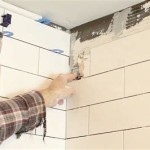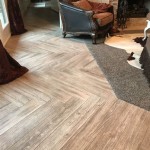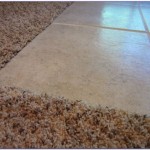The Best Mop For Tiles: A Comprehensive Guide
Maintaining the pristine appearance of tile floors requires selecting the appropriate cleaning tools. Tile, while durable and aesthetically pleasing, can accumulate dirt, grime, and spills, diminishing its visual appeal. Choosing the right mop is crucial for effective cleaning and preventing damage to the tile surface and grout lines. This guide provides a comprehensive overview of mop types, features, and considerations for selecting the best mop for various tile flooring scenarios.
Understanding Different Types of Mops
The market offers a diverse array of mops, each designed with specific cleaning mechanisms and functionalities. Understanding the nuances of each type is essential for making an informed decision that aligns with the characteristics of the tile flooring and individual cleaning preferences.
String Mops: String mops, also known as cotton mops, are characterized by their absorbent strands. These mops are effective for soaking up spills and covering large areas quickly. However, string mops can be less effective at picking up fine debris and may leave streaks on tile surfaces if not properly wrung out. Furthermore, cotton mops require thorough cleaning after each use to prevent the growth of bacteria and mildew.
Sponge Mops: Sponge mops utilize a cellulose or synthetic sponge head to absorb and trap dirt. These mops are generally more effective at picking up fine particles compared to string mops. Sponge mops also feature a wringing mechanism that allows for controlled water release, minimizing the risk of oversaturation. However, sponge mops may not be as effective at cleaning grout lines due to their flat surface.
Flat Mops: Flat mops employ a flat, rectangular head covered with microfiber or other absorbent material. These mops are lightweight, maneuverable, and excel at cleaning large, flat surfaces. The microfiber pads are typically washable and reusable, making them an environmentally friendly option. Flat mops are particularly suitable for cleaning smooth tile surfaces with minimal texture. However, similar to sponge mops, they may struggle with deep grout cleaning.
Steam Mops: Steam mops utilize the power of steam to sanitize and clean tile surfaces without the use of harsh chemicals. These mops heat water to create steam, which is then directed onto the floor to loosen dirt and grime. Steam mops are effective at killing bacteria and germs, making them a hygienic option for homes with children or pets. However, steam mops may not be suitable for all types of tile, particularly those with porous surfaces or sensitive sealants. It is crucial to consult the tile manufacturer's recommendations before using a steam mop.
Spin Mops: Spin mops incorporate a bucket with a built-in spinner that wrings out the mop head. These mops offer superior water control compared to traditional string mops, minimizing the risk of oversaturation and streaking. The spinning action also helps to remove dirt and debris from the mop head, promoting a cleaner cleaning process. Spin mops often come with microfiber mop heads, which are effective at trapping dirt and grime. They can be somewhat bulky to store compared to some other options.
Key Features to Consider When Choosing a Mop
Beyond the basic mop type, several features can significantly impact the cleaning performance and user experience. Evaluating these features is essential for selecting a mop that meets specific cleaning requirements and preferences.
Mop Head Material: The material of the mop head plays a crucial role in its absorbency, cleaning effectiveness, and durability. Microfiber mop heads are highly absorbent, effective at trapping dirt and grime, and machine-washable. Cotton mop heads are also absorbent but may require more frequent cleaning. Sponge mop heads offer good dirt pickup but may wear out more quickly than microfiber or cotton. Consider the texture of the tile and the types of spills that are common when selecting the mop head material.
Handle Length and Design: The handle length and design affect user comfort and maneuverability. A handle that is too short can lead to back strain, while a handle that is too long can be difficult to control. Adjustable handles allow for customization to suit different heights and cleaning tasks. A swivel head enhances maneuverability, making it easier to clean around furniture and in tight spaces. Consider the ergonomic design of the handle for extended use without discomfort.
Wringing Mechanism: The wringing mechanism determines how easily and effectively excess water can be removed from the mop head. Effective wringing is essential for preventing oversaturation and streaking. Spin mops and sponge mops typically offer superior wringing mechanisms compared to traditional string mops. Consider the ease of use and effectiveness of the wringing mechanism when making a selection. Some wringing mechanisms require significant force, while others are more user-friendly.
Bucket Design: For mops that require a bucket, the design of the bucket can impact the cleaning process. Buckets with separate compartments for clean and dirty water help to prevent recontamination of the mop head. Buckets with built-in wringers streamline the wringing process. Consider the size and portability of the bucket, as well as any additional features that enhance its functionality.
Durability and Construction: The overall durability and construction of the mop determine its lifespan and resistance to wear and tear. Look for mops made from high-quality materials that can withstand frequent use and cleaning. A sturdy handle and a well-constructed mop head are essential for long-term performance. Check online reviews and ratings to gauge the durability of different mop models.
Ease of Maintenance: The ease of cleaning and maintaining the mop is an important consideration. Mop heads that are machine-washable are convenient and promote hygiene. Mops with removable mop heads are easier to clean and replace. Consider the cleaning requirements of the mop and its individual components before making a purchase.
Choosing the Right Mop for Specific Tile Types and Cleaning Needs
The best mop for tile varies depending on the type of tile flooring and the specific cleaning needs. Different tile materials have unique characteristics that require different cleaning approaches.
Ceramic Tile: Ceramic tile is a durable and water-resistant material that is relatively easy to clean. Most mop types are suitable for cleaning ceramic tile, but microfiber flat mops and steam mops are particularly effective at removing dirt and grime without scratching the surface. Avoid using abrasive cleaners or scouring pads, as these can damage the glaze on ceramic tile.
Porcelain Tile: Porcelain tile is denser and more durable than ceramic tile, making it resistant to stains and scratches. Similar to ceramic tile, most mop types are suitable for cleaning porcelain tile. Steam mops are particularly effective at sanitizing porcelain tile, while microfiber flat mops provide excellent dirt pickup. Consider using a pH-neutral cleaner to prevent damage to the grout.
Natural Stone Tile: Natural stone tile, such as marble, granite, and slate, requires special care to prevent damage. Avoid using acidic or alkaline cleaners, as these can etch or discolor the stone. Use a pH-neutral cleaner specifically designed for natural stone. Microfiber flat mops are gentle and effective at cleaning natural stone tile. Avoid using steam mops on porous natural stone, as the steam can penetrate the stone and cause damage.
Grout Cleaning: Grout lines are often the most challenging part of cleaning tile floors. Grout is porous and can easily trap dirt, grime, and stains. String mops and sponge mops can be helpful for scrubbing grout lines, but a dedicated grout brush is often necessary for removing stubborn stains. Consider using a grout cleaner specifically designed for removing stains and discoloration.
Large Areas: For large areas of tile flooring, a lightweight and maneuverable mop is essential. Flat mops and spin mops are particularly well-suited for cleaning large areas quickly and efficiently. Consider using a mop with a swivel head to improve maneuverability around furniture and in tight spaces.
Small Areas: For small areas of tile flooring, a compact and easy-to-store mop is ideal. Sponge mops and small flat mops are good options for cleaning small spaces, such as bathrooms and kitchens. Consider using a mop with a telescoping handle for easy storage.
Frequency of Cleaning: The frequency of cleaning also influences the choice of mop. For daily or weekly cleaning, a simple and easy-to-use mop, such as a flat mop or a sponge mop, may suffice. For less frequent cleaning, a more powerful mop, such as a steam mop or a spin mop, may be necessary to remove accumulated dirt and grime.
Ultimately, the best mop for tiles depends on individual preferences and the specific characteristics of the tile flooring. By considering the different types of mops, key features, and cleaning needs, it is possible to select a mop that effectively cleans and maintains the beauty of tile floors for years to come. Prior to using any cleaning method or product, consulting the tile manufacturer's guidelines is always recommended to prevent damage.

Mop Like A Pro The Comprehensive Guide Maidforyou

9 Best Mops Of 2024 Reviewed

Best Tile Floor Cleaners Expert Reviews Guide Pro Tool
The 5 Best Mops For All Types Of Floors

How To Clean Tile Floors The Ultimate Guide Fantastic Services Aus
The 5 Best Mops For All Types Of Floors

The Best Mops In 2024 Tried And Tested Cnn Underscored

The Ultimate Vileda Mop Guide For Your Floors

How To Clean And Maintain Your Tiles A Step By Guide Tiletoria

How To Deep Clean Tile Floors Your Ultimate Guide Total Floor Service Melbourne
Related Posts








